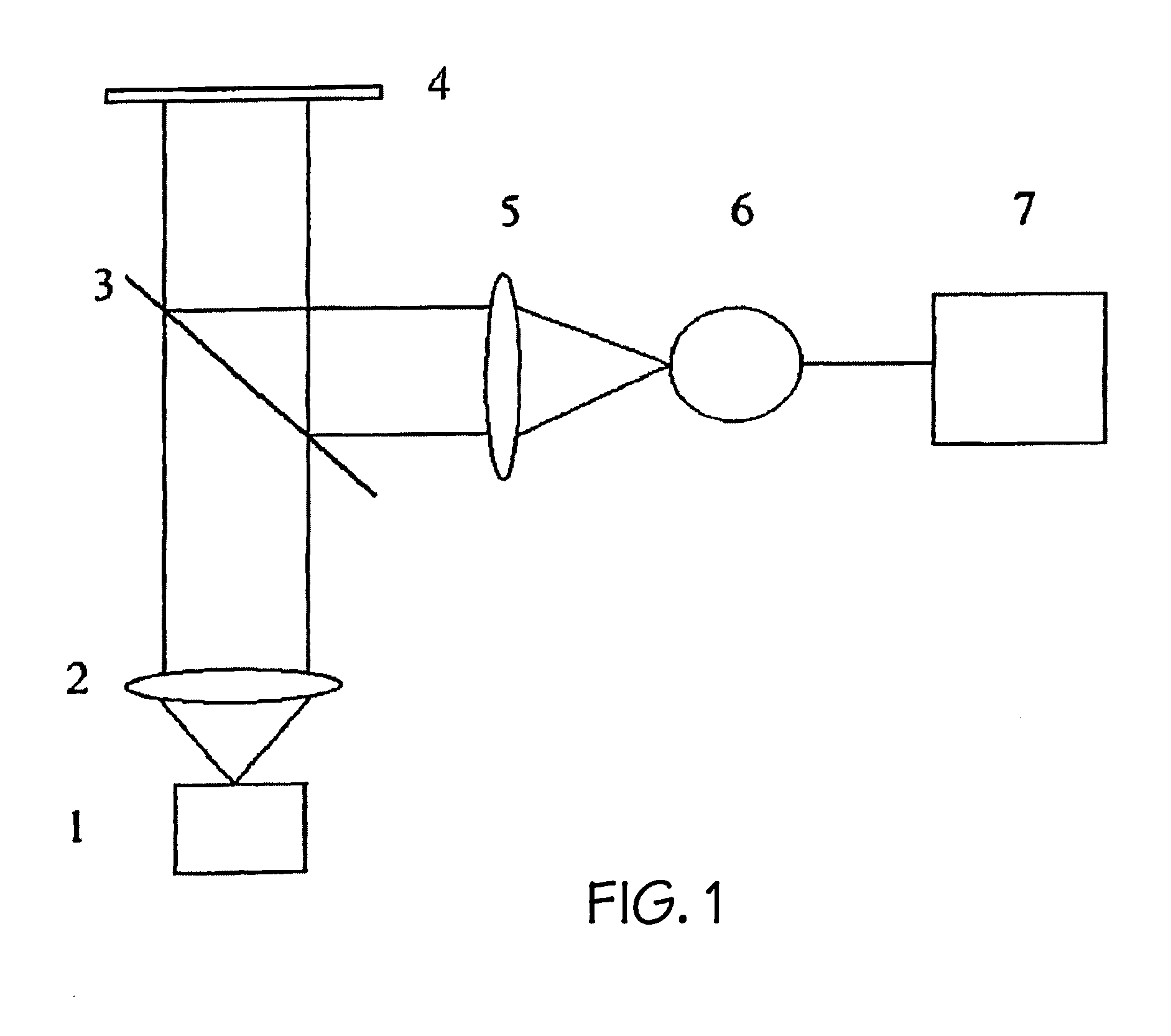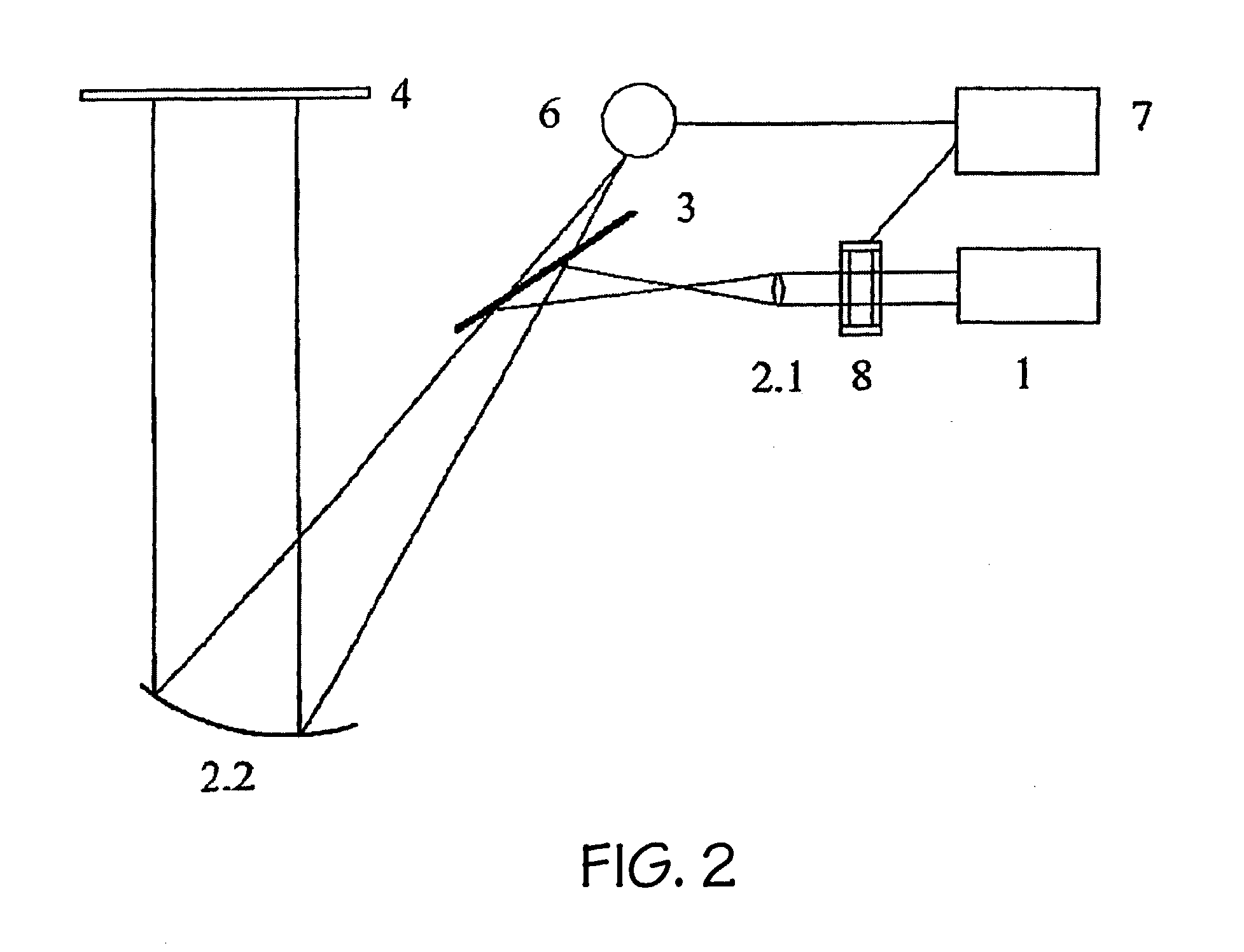Method for optical detection of an adjoining of a material component to a sensor material with the aid of biological, chemical or physical interaction and device for carrying out said method (variants)
a technology of biological, chemical or physical interaction and optical detection, applied in the direction of material testing goods, biochemistry equipment and processes, biochemistry apparatus and processes, etc., can solve the problems of insufficient reliability, low sensitivity, low precision, etc., to reduce labor input and cost, simplify the method, and reduce the number of necessary operations
- Summary
- Abstract
- Description
- Claims
- Application Information
AI Technical Summary
Benefits of technology
Problems solved by technology
Method used
Image
Examples
Embodiment Construction
[0279] First variant of the proposed apparatus is schematically shown in FIG. 1. A substance (or several substances) capable to bind material (biological, chemical or other) components due to a biological, chemical or physical interaction is located on a surface of or inside a sensor layer 4. The substance contacts a medium (not shown in FIG. 1) that contains or presumably contains the said components. Biospecific binding (e.g. antigen-antibody, biotin-avidin), formation of chemical associations, adsorption or absorption, etc. can be named among examples of such interactions. For operation of the apparatus it is imperative not the type of interaction, but the fact that any such binding goes with superinduction of a new substance to the surface of or into the sensor layer and causes an increase (a decrease in variants according to claims 57 and 68, when the sensor layer is formed by the medium under test) of optical thickness of the sensor layer, which is registered by the apparatus....
PUM
| Property | Measurement | Unit |
|---|---|---|
| thickness | aaaaa | aaaaa |
| thickness | aaaaa | aaaaa |
| thickness | aaaaa | aaaaa |
Abstract
Description
Claims
Application Information
 Login to View More
Login to View More - R&D
- Intellectual Property
- Life Sciences
- Materials
- Tech Scout
- Unparalleled Data Quality
- Higher Quality Content
- 60% Fewer Hallucinations
Browse by: Latest US Patents, China's latest patents, Technical Efficacy Thesaurus, Application Domain, Technology Topic, Popular Technical Reports.
© 2025 PatSnap. All rights reserved.Legal|Privacy policy|Modern Slavery Act Transparency Statement|Sitemap|About US| Contact US: help@patsnap.com


